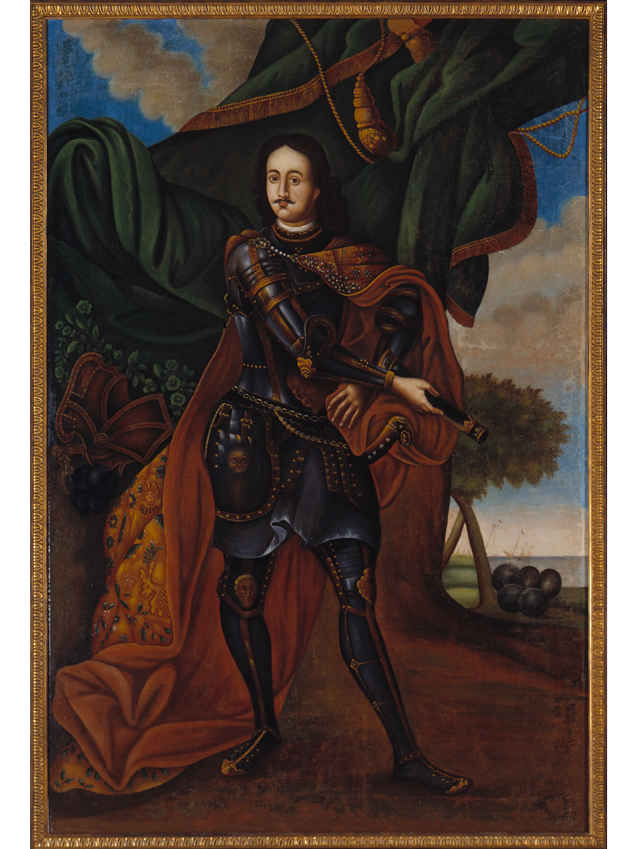Portrait of tsar Peter Alexeevitch

This portrait is known as the first gala portrait of the young Peter I, made by Russian artists. The history of its making is associated with one of the first victories over the Swedes in a course of the Great Northern war of 1700-1721. On June 25, 1701 defenders of the Novodvinskaya fortress defeated Swedish navy squadron and repelled an assault launched on the only Russian seaport of Arkhagelsk. The Novodvinskaya fortress was built at the behest of the Tsar Peter in order to protect the port of Arkhangelsk. Encouraged by that victory and expecting a new attack Peter arrived in summer of 1702 to Arkhangelsk. The portrait presumably had been painted at the order of the Archbishop of Kholmogory Athanasius, a companion of Peter the Great. The artists of the Moscow Armory Chamber had been invited to decorate the Church of Saint Apostles Peter and Paul in the Novodvinskaya fortress. They were assisted by icon-painters from Bishop’s House “Ivan Pogorelsky and other icon makers”. It is quite possible that Peter personally participated in elaboration of outline of this portrait. Peter is depicted on the background of the rampart of the Flag Bastion of the fortress overlooking the site of the battle and tents of the camp on the Brevennick Island. Cannon balls and two half sank Swedish ships reflect the effects of the fight. Peter I Alexeevitch (1672-1725) was the son of Tsar Alexey Mikhailovitch and Tsarina Natalia Kirillovna Naryshkin. He became a Tsar in 1682. In 1721 he was proclaimed an Emperor of All Russia. Prominent statesman and Reformer; creator of the Russian regular army and the Russian Navy; He was implementing major scale reforms in all areas of State, economic and social life of the Country. His domestic and foreign policy was aimed at integration of Russia in European system, its modernization and its transformation in a Great Power.
